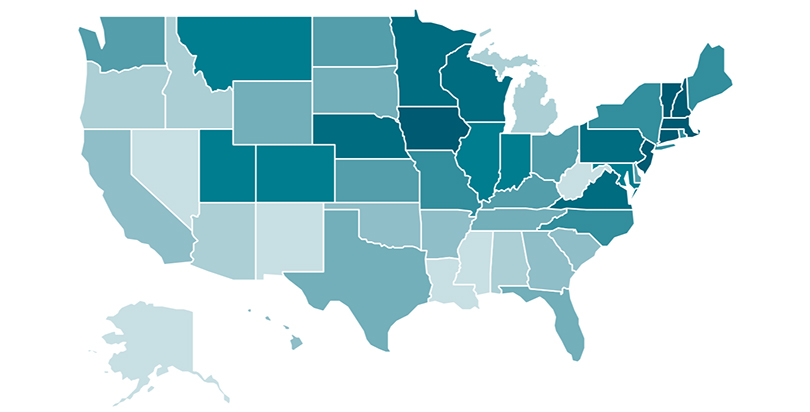Report: Family Well-Being, Education Decline for U.S. Kids Despite Recovery From Great Recession

As the country climbed out of the Great Recession, the health and economic well-being of children gradually improved. What the economic recovery didn’t offer, however, were gains in education and in family and community climate.
Those are the findings from the 2017 Kids Count Data Book, an annual analysis by the Annie E. Casey Foundation that measures the well-being of American children across four domains: economic, education, health, and family and community. This year, the report ranked New Hampshire, Massachusetts, and Vermont at the top of all states for overall child well-being. Louisiana, New Mexico, and Mississippi ranked at the very bottom.
In terms of education, Massachusetts and New Jersey were the top-ranked states, while Nevada and New Mexico were the bottom two. Nevada school leaders have already responded, promising that measures passed by state lawmakers this year will propel Nevada’s students forward.
More American families are living in high-poverty neighborhoods, particularly in the South and Southwest, the report found. Between 2011 and 2015, 14 percent of children across the country lived in communities where poverty rates were at or above 30 percent.
“The U.S. continues to have one of the highest child poverty rates among all developed countries,” Laura Speer, the foundation’s associate director of policy reform and advocacy, said in a statement. “This unfairly burdens our young people and the nation, costing an estimated $500 billion a year in reduced economic opportunities and increased health and criminal justice–related costs.”
The report illustrated some gains in reading proficiency and high school graduation — with an all-time high of 83 percent of high school students graduating on time in 2014–15, the latest year for which data are represented in the report. In 2010–11, the on-time graduation rate was 79 percent. Gaps remain, however, in terms of race and family income.
And despite rising graduation rates, American children are still lagging in core competencies. While fourth-graders saw slight gains in reading proficiency in 2015 over 2009, the proportion of students not proficient in reading is still high, at 65 percent. A previous report by the foundation found that low fourth-grade reading proficiency increases a child’s risk of dropping out of school and reduces odds of career success and earning potential later in life.
Among eighth-graders, math proficiency decreased — 68 percent of eighth-graders were not proficient in math in 2015, slightly up from 67 percent in 2009. The authors note that math skills are critical for career success and that students who take advanced math and science classes tend to earn higher salaries in adulthood.
“We must use reliable data to inform policy decisions that ease poverty and create the next generation of healthier and better-educated citizens,” foundation president and CEO Patrick McCarthy said in a statement. “We call on policymakers to use this evidence to continue and expand what’s working, and to find additional solutions that make a measurable difference for children.”
The foundation made the following recommendations:
-
Maintain health care programs: “Reaching 95 percent of U.S. children with health insurance is a tremendous achievement that should not be jeopardized. Provide continued investments at the federal and state levels. Remove systemic barriers that prevent families from enrolling their children in health coverage programs.”
-
Invest in early childhood education programs: “Science has taught us that the first few years of development can position a child for success in school and life. Supporting early childhood education opportunities at the local, state and federal levels enables children to reach critical milestones that lead to lifetime success.”
Expand programs that create economic stability for families: “The [Earned Income Tax Credit], at the federal level and in many states, has become a cornerstone in helping low-income families meet basic needs. Offering tax breaks for child care can help working parents better balance their financial responsibilities.”
Get stories like these delivered straight to your inbox. Sign up for The 74 Newsletter

;)
